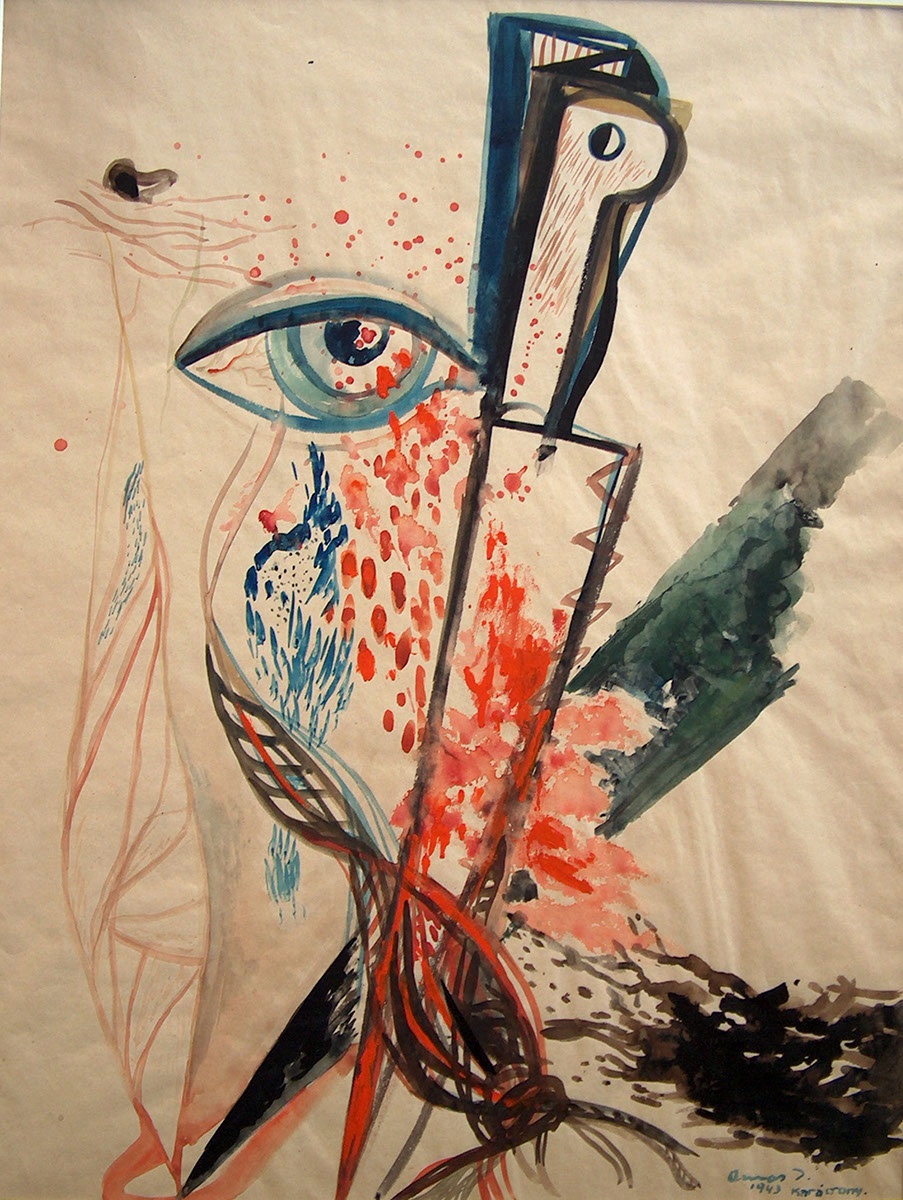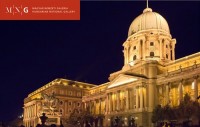In his works presenting the post-1938 “dark times”, Imre Ámos tried to depict the threatening danger, the compulsion to flee, as well as the affirmation of the longed for peace, employing definite outlines, powerful colours and expressive symbols. His series of drawings made from the end of the 1930s constitute a unique diary. He was able to best express his impressions, the nervous and the depressed atmosphere in the imminence of World War II, in graphic art. He developed his own system of symbols and his works included motifs reflecting the war, violence, dark forces and fear more and more frequently, besides the longing for beauty, peace, undisturbed creative work, love and understanding. The central motif of one of his summarizing, emblematic, large-scale drawings, War – Knife is the knife, depicted as a tool of murder, the symbol of power and violence, while the eye, rendered surrealistically without a face, shedding tears of blood, can be interpreted as mourning for mankind facing ruin.
en

